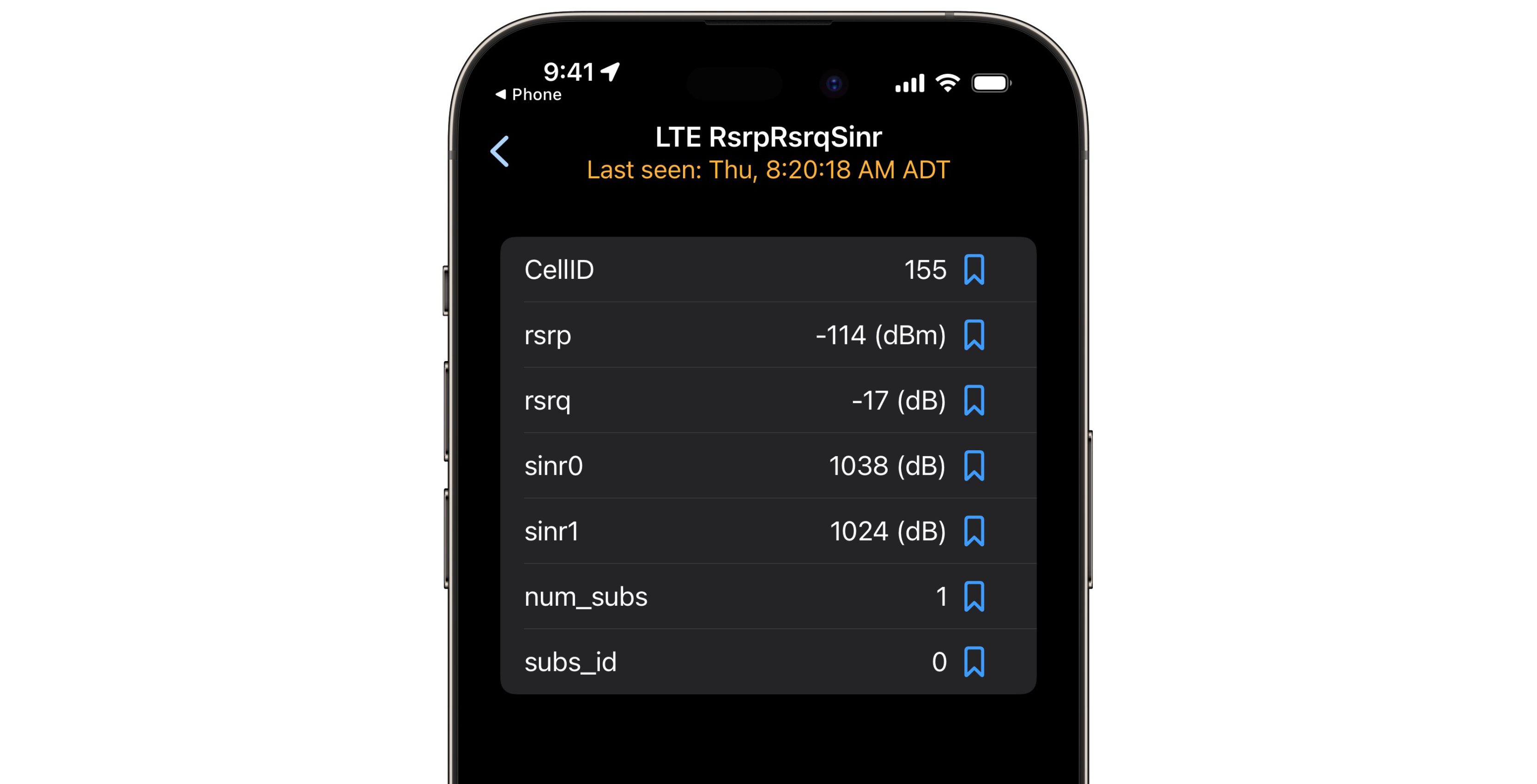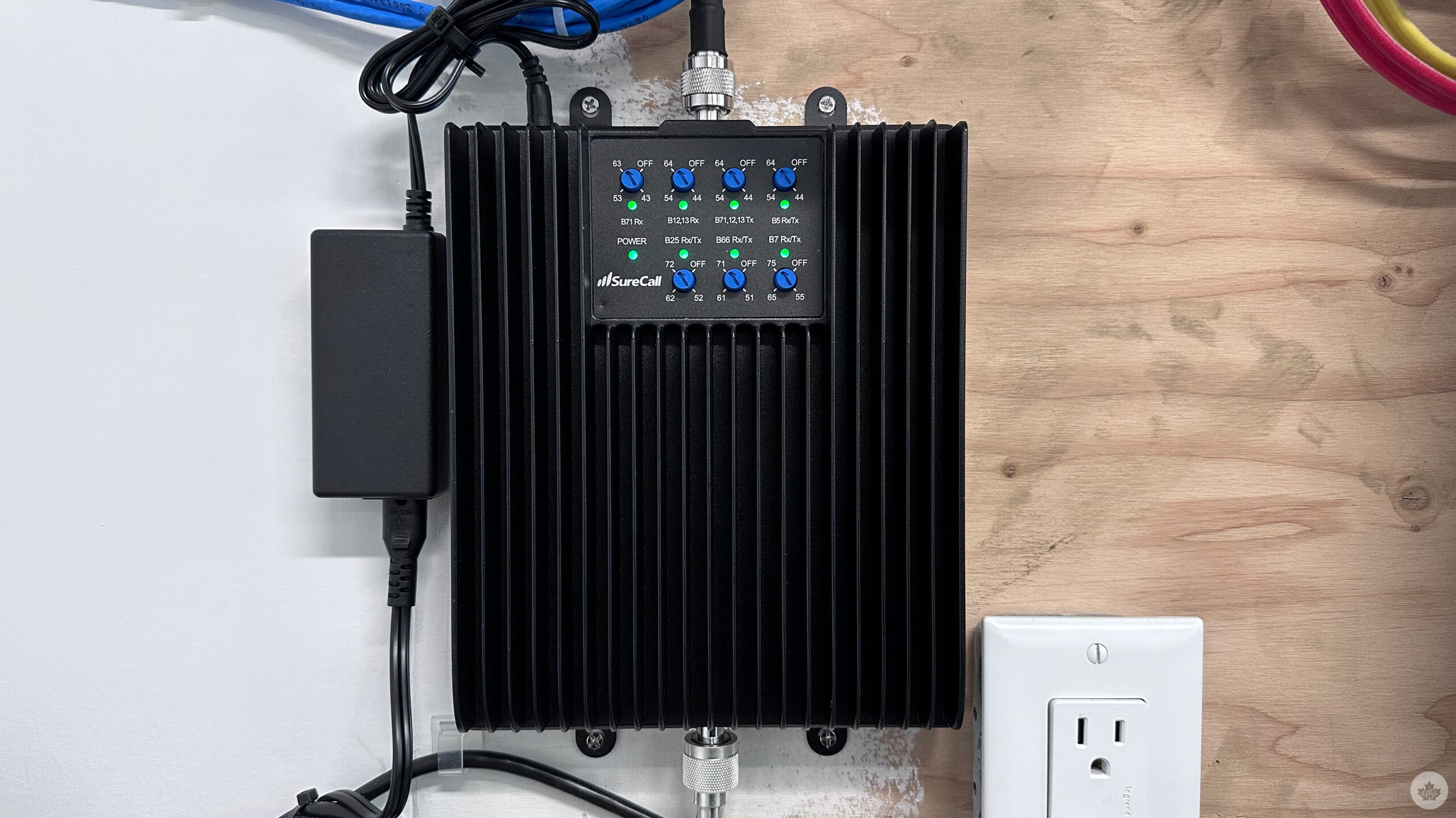
On August 1st, I was thrilled to be handed the keys to my new house in my hometown on the South Shore of Nova Scotia. Living in Halifax for the past eight years, I was accustomed to fibre optic internet with symmetric gigabit speeds and full bars of 5G service.
Fortunately, Bell wired my subdivision for Fibe, so internet speed was never a concern. Nevertheless, upon moving into my house, I discovered I was lucky to get a single bar of LTE service on my iPhone 14 Pro. Until my internet was installed, trying to make phone calls (I know, who makes phone calls anymore) was a monumental pain, resulting in dropped conversations and voices cutting out. Plus, web pages rarely loaded while attempting to use my mobile data.
Once Bell installed my internet, I mainly relied on Wi-Fi calling. I’ll explain more about Wi-Fi calling later. I remembered that a year ago, a company called SureCall wanted MobileSyrup to check out their cell signal boosters. At the time, I lived in a condo and didn’t have a place to mount the antenna. However, having since moved into a house with poor cell service, I reached out to see if they could help me. A few emails later, SureCall had an installation technician scheduled and an antenna in the mail to see if it could help my cell service troubles.
What’s considered good cell service?
Most people would likely define “good” cell service as having near or full bars. The frustrating part about signal bars is that they aren’t as informative as they appear. Cell signals are radio waves transmitted on frequencies dedicated to cellular communications. Decibel-milliwatts, or dBm, is how this signal is measured.
Generally speaking, dBm measurements range from approximately -50 to -120. The closer the number is to zero, the stronger your signal. -50 and above is considered a near-perfect signal. -50 to -89 is good, -90 to -99 is average, -100 to -109 is poor, and anything below 120 is essentially no service. How these numbers relate to signal strength varies based on the source you’re using, so these are approximations based on my research.
The trick your phone’s signal bars play on you is that there is no industry standard on how many bars should represent a certain amount of signal strength. Generally speaking, yes, more bars do equal better service. However, an iPhone or Android phone sitting next to each other could have different quantities of signal bars. Equally so, even two iPhones sitting side by side could too. The algorithm determining the number of signal bars can vary based on manufacturer, model, and cellular transmitter.
Checking your service
Since our phone’s signal bars don’t provide a consistent determinator of cellular signal, manufacturers have included a hidden app built into iOS and Android called Field Test. Field Test is an information tool showing you the live dBm number labelled as RSRP or “Reference Signal Received Power.” There’s also RSRQ, which stands for “Reference Signal Received Quality.” RSRQ is similar to RSRP but also takes interference into account. RSRQ ranges from -3 to -20. Again, the closer to zero, the better. -5 to -10 is considered good, while -15 and below is poor.
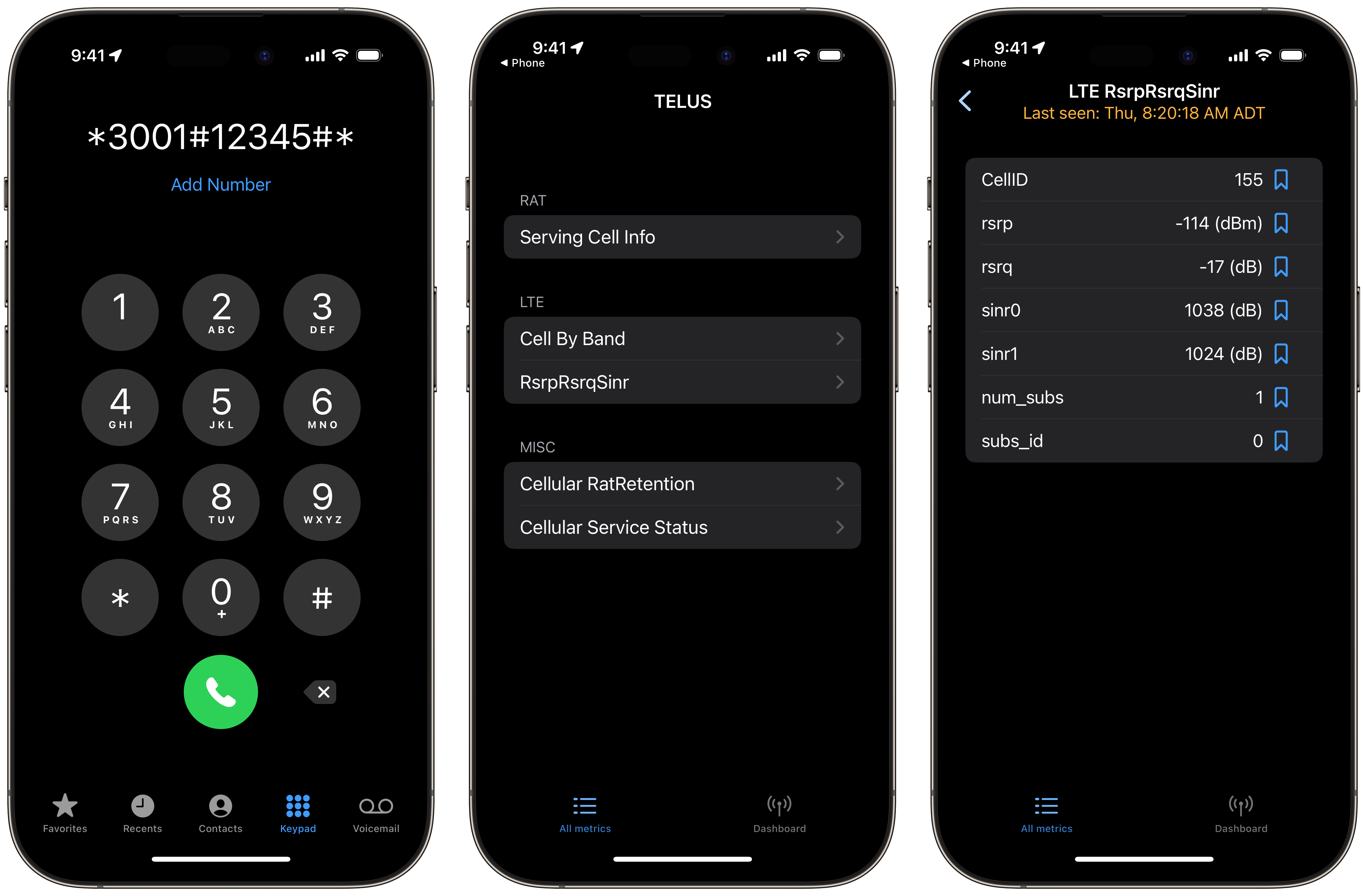
To open Field Test on an iPhone:
1. Turn off Wi-Fi
2. Open the Phone app
3. Tap Keypad
4. Dial *3001#12345#*
5. Tap the green call button
6. Tap RsrpRsraSinr
To open Field Test on most Android phones:
1. Open Settings
2. Tap About Phone
3. Tap Status or Network
4. Tap SIM Status
What is SureCall?
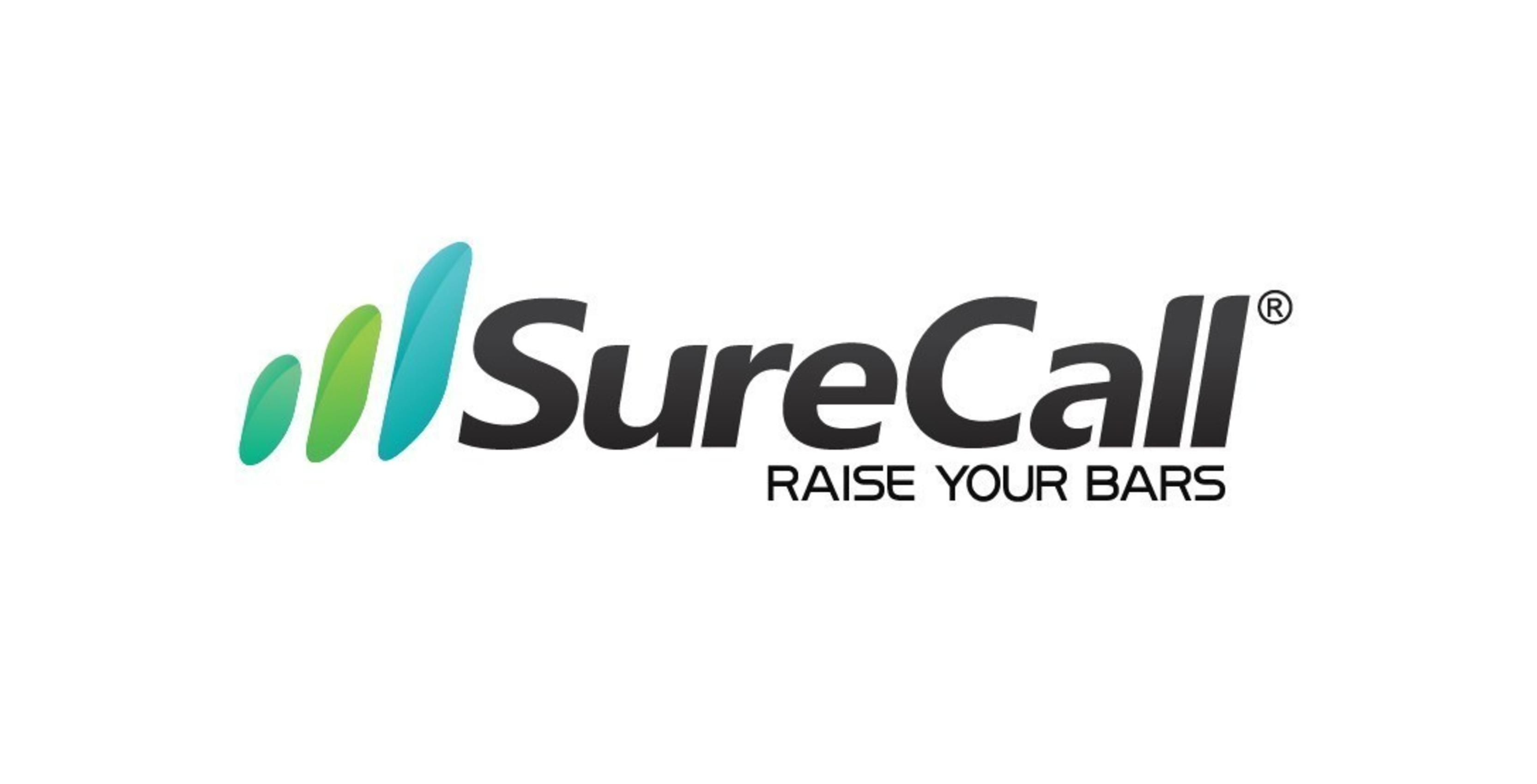 SureCall is a California-based cell phone signal booster company designing solutions for vehicles, homes, and businesses. President & CEO Hongtao Zhan founded the company in 2001. SureCall holds six patents and several awards for its technology. Its customer base includes major brands like HP, Duke University, ExxonMobil, Chrysler, and several government agencies. In short, SureCall seemingly really knows what it’s doing when it comes to boosting your cell signal.
SureCall is a California-based cell phone signal booster company designing solutions for vehicles, homes, and businesses. President & CEO Hongtao Zhan founded the company in 2001. SureCall holds six patents and several awards for its technology. Its customer base includes major brands like HP, Duke University, ExxonMobil, Chrysler, and several government agencies. In short, SureCall seemingly really knows what it’s doing when it comes to boosting your cell signal.
Fusion Professional 2.0
SureCall has quite a range of solutions covering residential and commercial spaces, your vehicle, and even network infrastructure. After all, the company’s goal is to eliminate poor cell service and dropped calls, so they seemingly have a solution for anywhere. As cool as it’d be to have an industrial cell signal booster solution in my house, SureCall sent me its Fusion Professional 2.0. The company also kindly included an antenna mount.
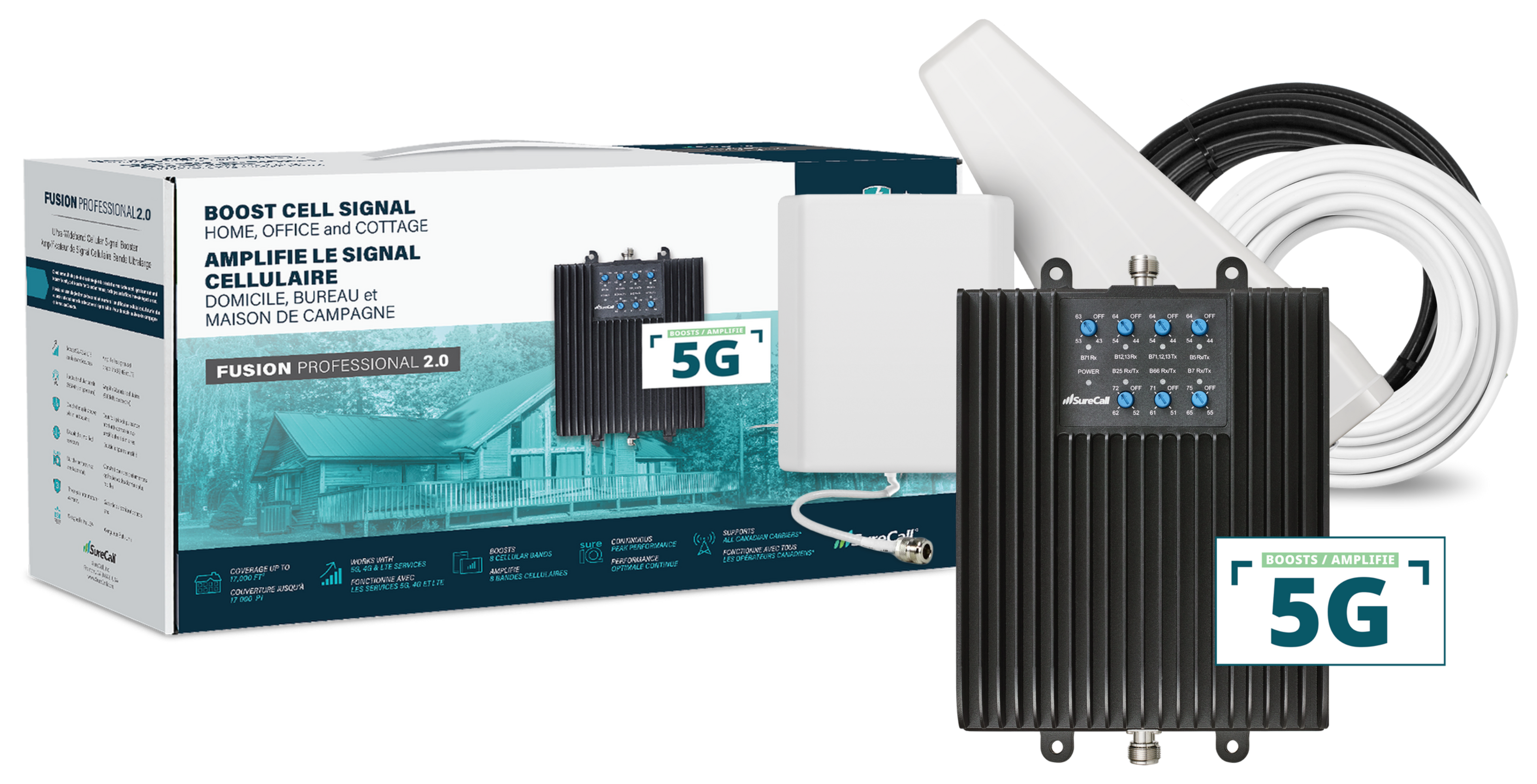 The Fusion Professional 2.0 is branded as a solution for large homes, offices, and cottages. I won’t dive into defining the technical. Still, the Fusion Professional 2.0 can boost 5G Ultra-Wideband signals and supports multiple devices running any Canadian carrier.
The Fusion Professional 2.0 is branded as a solution for large homes, offices, and cottages. I won’t dive into defining the technical. Still, the Fusion Professional 2.0 can boost 5G Ultra-Wideband signals and supports multiple devices running any Canadian carrier.
The box includes:
- 20 feet of indoor cable
- 50 feet of outdoor cable
- An outdoor Yagi antenna
- An indoor panel antenna
- A power supply
- The Fusion Pro 2.0 booster, which is a black wall-mounted box with some blue nobs and lights.
My Experience
By no means do I consider myself an expert in cellular signal strength. I’m just a guy who loves technology and moved into a house with poor service. I was fortunate that SureCall was interested in sending me some hardware to try out. Before installing the Fusion Professional 2.0, I’d have one bar of cell service that rarely worked. The signal seemed to range between -97 to -114 dBm.
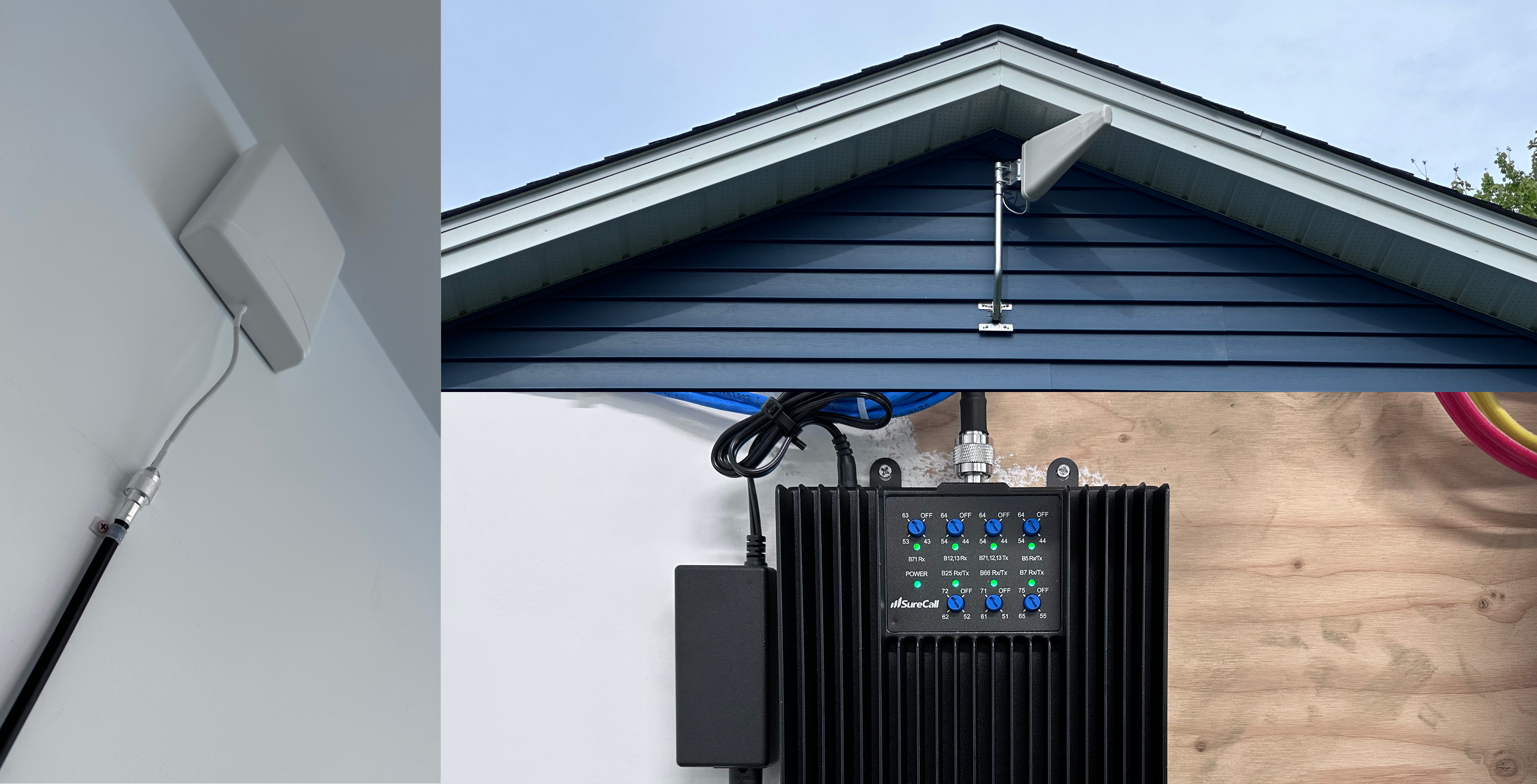
Post installation and waiting a day or so for the device to calibrate, I typically see two, sometimes even three bars of service. My mobile data works more consistently and dropped calls no longer seem to occur. I saw improvement up to -88 dBm. One thing to note is that I wasn’t overly strategic about where I placed my booster. I opted to install my Fusion Professional 2.0 on the outer wall of my garage. I did this for two reasons. First, that outer wall points towards a cell tower. Second, it’d be near all my other network gear and would be less of an eyesore.
I mention my placement because if I had opted to install the Fusion Professional 2.0 in a more central location, I’d likely see even better results. Should you decide to install a cellular signal booster in your home, consider a centrally located place near an outlet that is somewhat hidden, as you will have two devices mounted on your wall.
Those who live in areas with poor cell service may notice their device’s battery drain quicker than in areas with stronger reception. This is because your device must work harder to find a quality signal. So, getting a cellular signal booster may also benefit your device’s battery.
Wi-Fi Calling
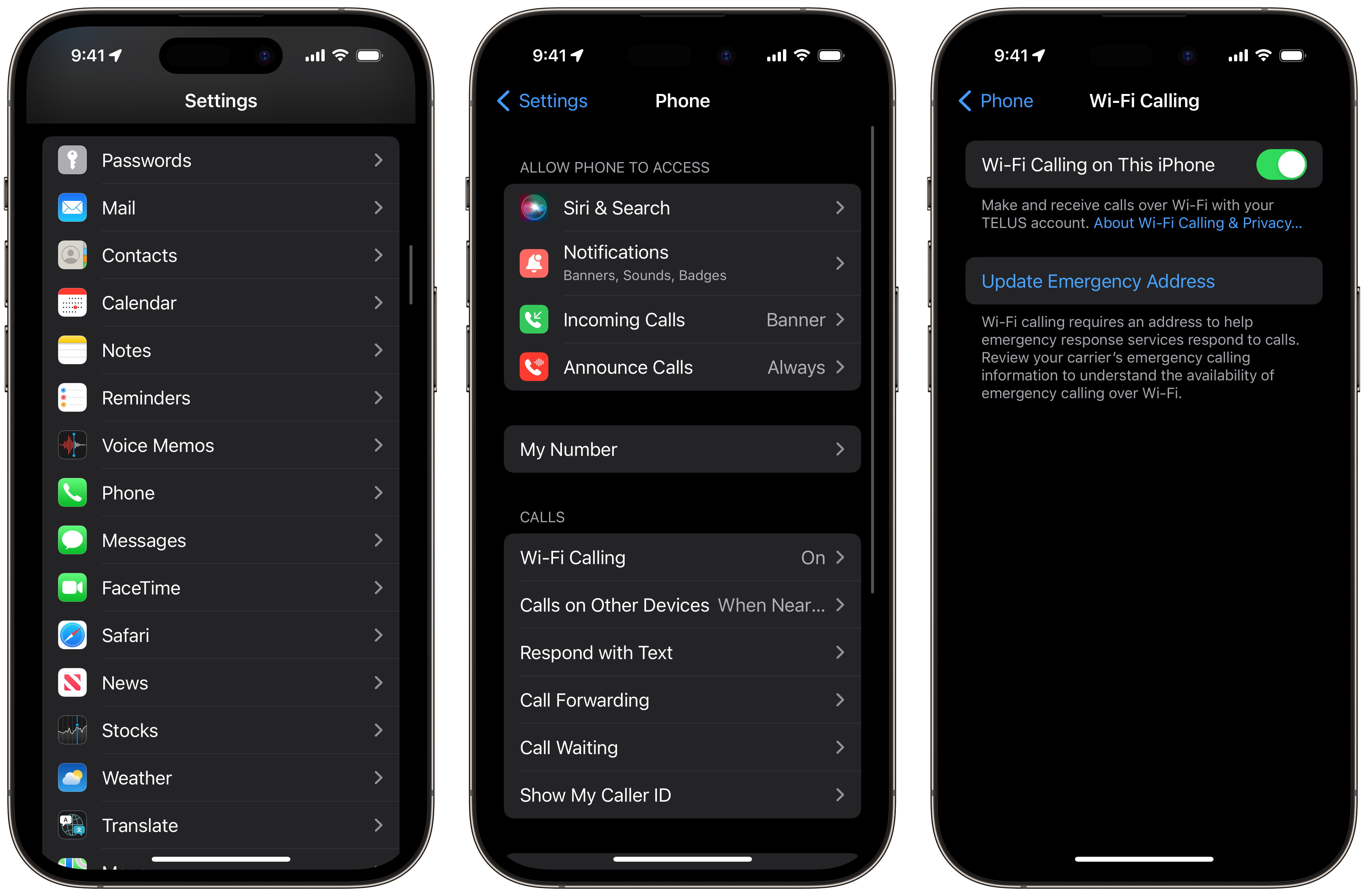
In the intro, I mentioned Wi-Fi calling, a neat feature on most modern smartphones. When your device has weak (typically two or fewer bars) or no service, your phone call runs over your home internet connection instead of the cellular service. Despite the name, Wi-Fi calling also supports sending SMS messages with weak or no cell service. Wi-Fi calling can be an excellent option in an area with poor reception.
iPhone 6 and newer all support Wi-Fi calling, and Apple has a support article walking through setting up the feature. Google also has a support article for Pixel 6 and newer devices. Many other brands, including Samsung, OnePlus, Oppo, and Huawei, support Wi-Fi calling. Wi-Fi Calling support also varies based on the carrier. While Bell, Telus, and Rogers widely support Wi-Fi calling, verify device support with your particular carrier.
The SureCall Fusion Professional 2.0 costs $999.
MobileSyrup may earn a commission from purchases made via our links, which helps fund the journalism we provide free on our website. These links do not influence our editorial content. Support us here.

